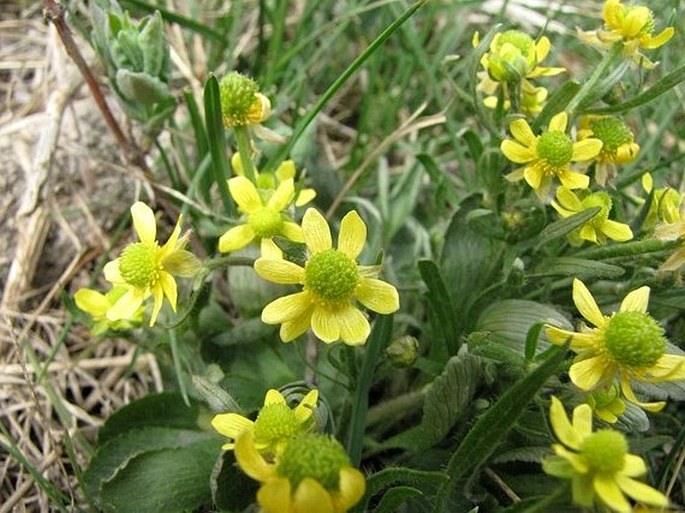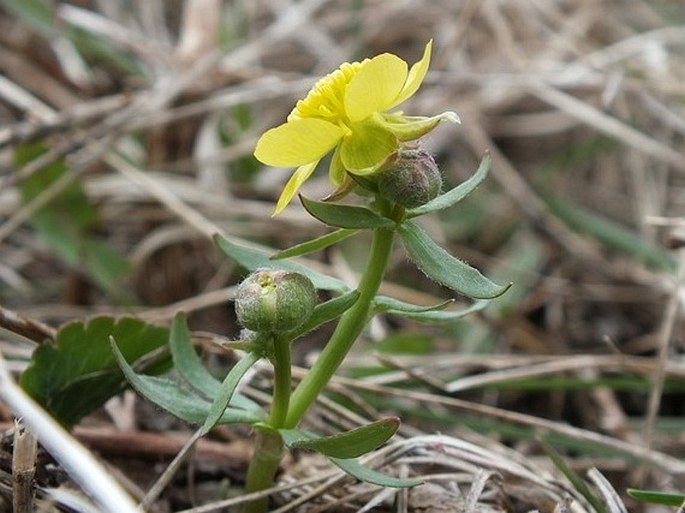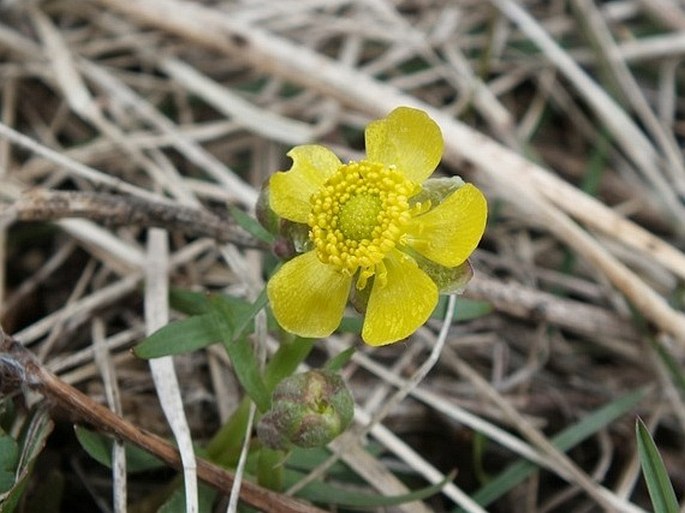Syn.: Ranunculus ellipticus Greene, Ranunculus oreogenes Greene
Family: Ranunculaceae Juss.

Distribution: West of North America, southern parts of British Columbia to Saskatchewan, from western parts of Dakotas, Wyoming, Colorado and north part of New Mexico and Arizona, just touching northeast of California, absent in coastal parts of Pacific states north of California. At higher elevations than the nominate var. glaberrimus, that is 1000–3600 m.
Ecology: Wet slopes and moist depressions in grasslands. Blooms early among the first flowers in the spring as the common name suggests.

Description: Perennial herb, 5–15 cm tall, from 2–3 mm thick roots. Stems fleshy, hairless, clumped, ascending to erect. Basal leaves ovate or elliptic to narrowly elliptic, 1.5–5 cm long, 1–2 cm wide, margins entire or scalloped, petiolate, hairless, stem leaves few, smaller, short petioles. Flowers yellow, saucer-shaped, 1.5–2.5 cm across, 1 to several on long pedicels; bracts 3-lobed, middle lobe longer than the lateral ones, hairy on bottom; sepals small, purplish, soon dropped; petals 5–10, 8–13 mm long. Fruit is an achene, 1–2 mm long, downy, straight or curved.
Note: As all Ranunculaceae are poisonous to some degree, one Indian tribe used this plant to poison their arrow points.


These images were taken in Canada, Alberta, Calgary, Confluence Park (May 2014).


